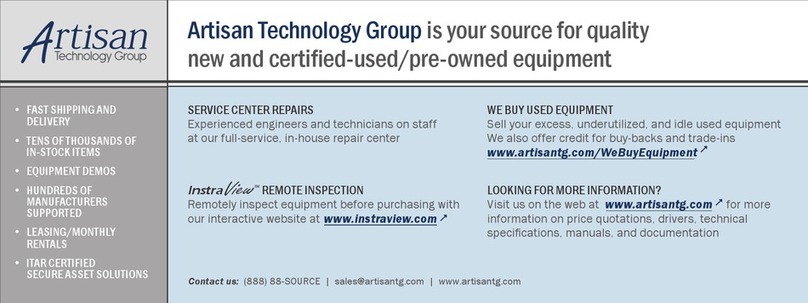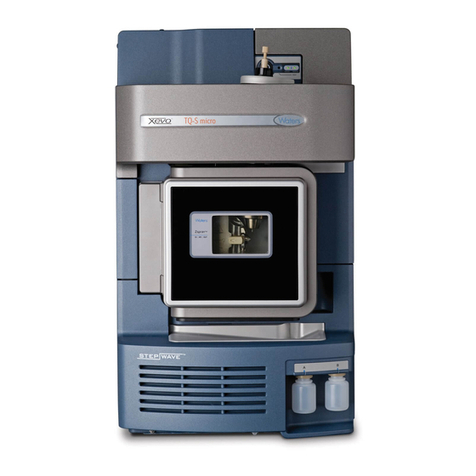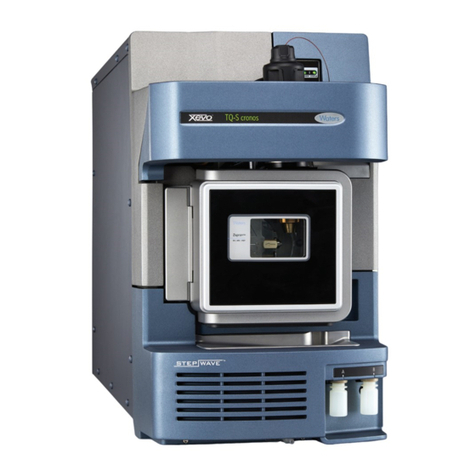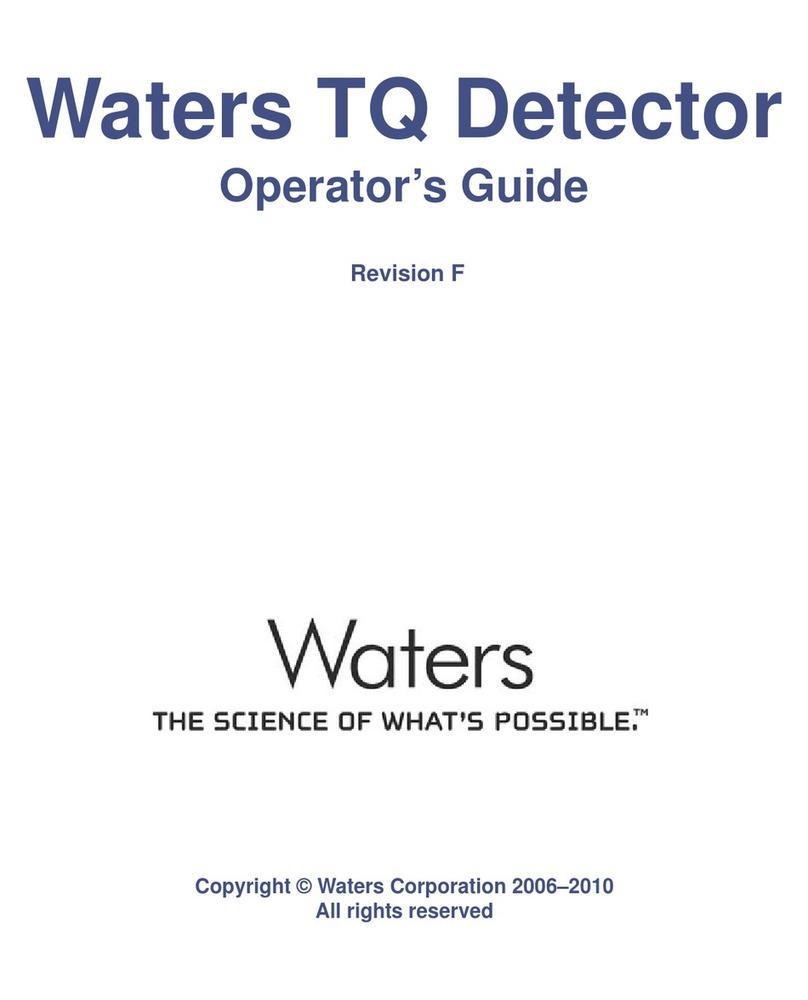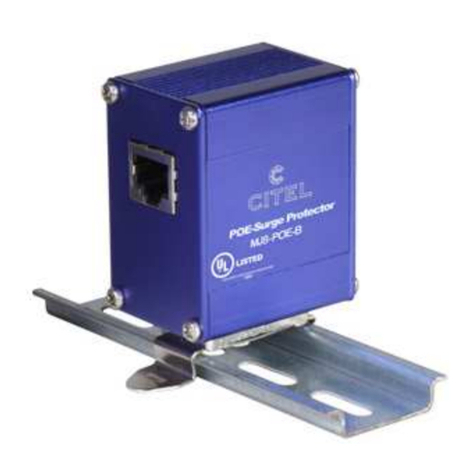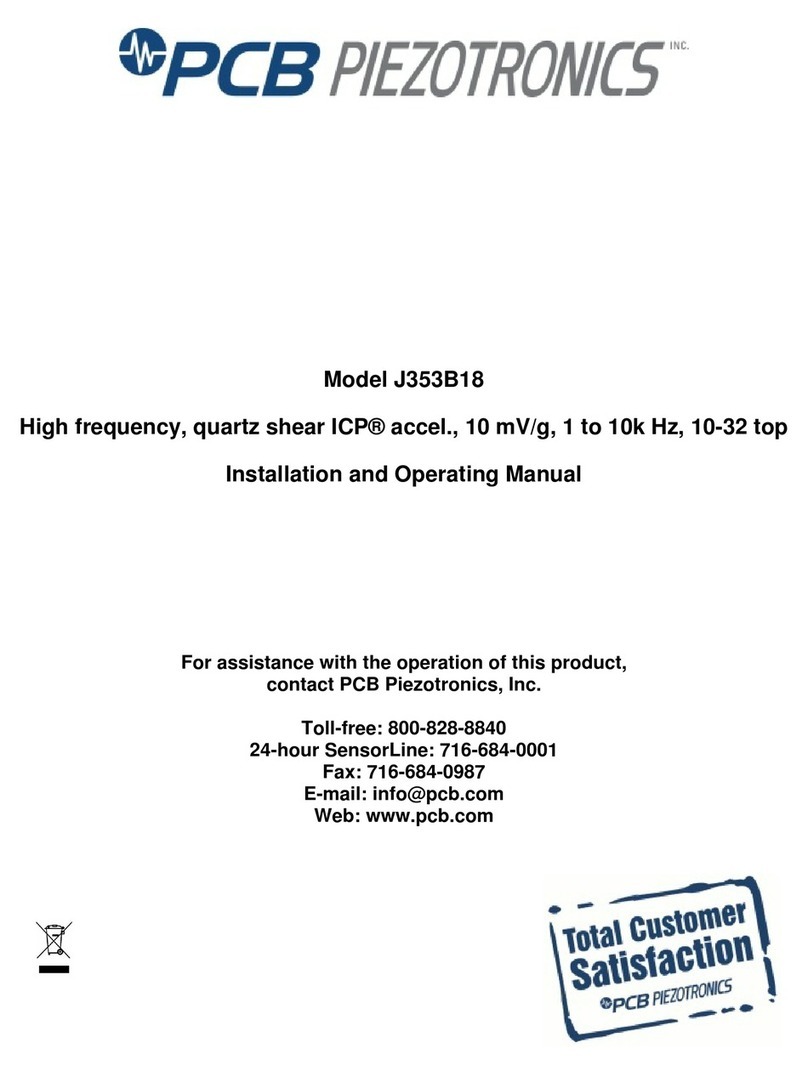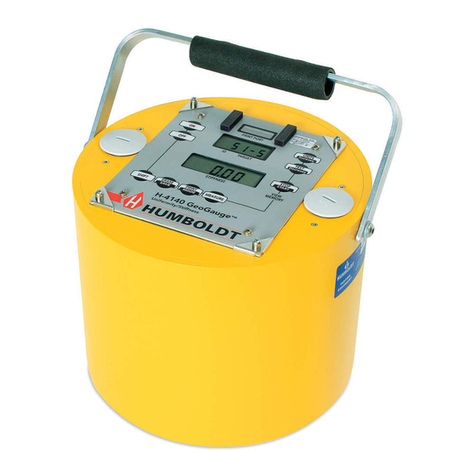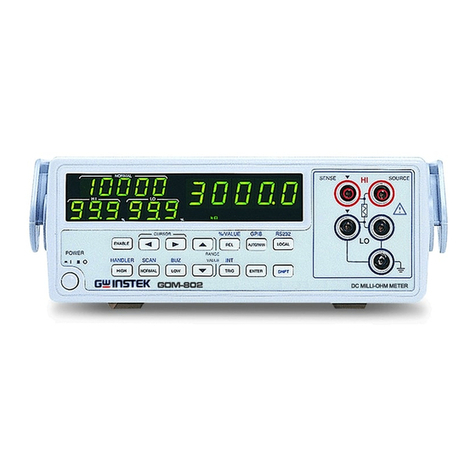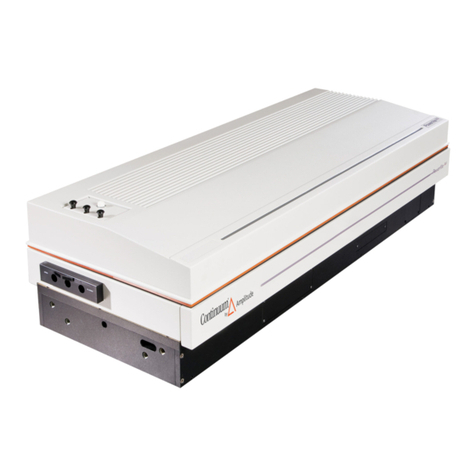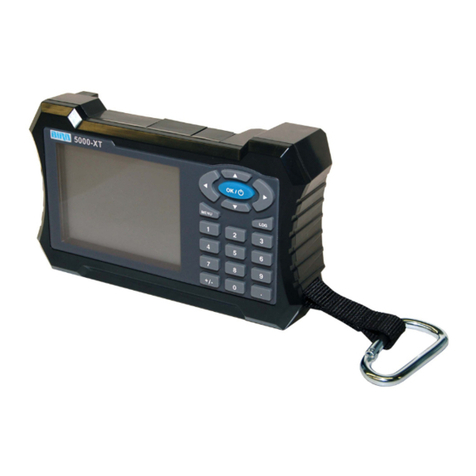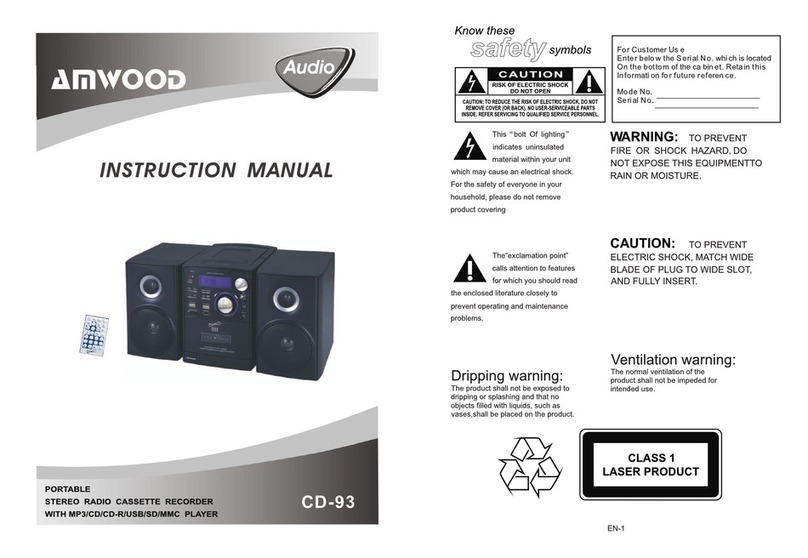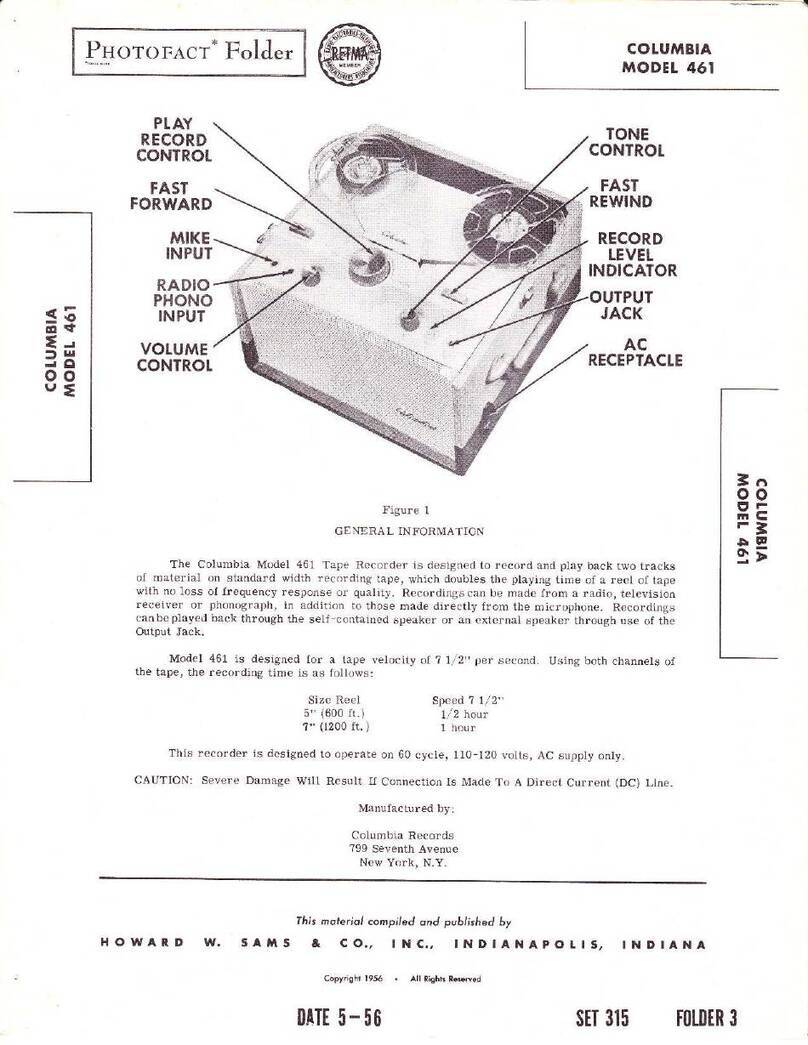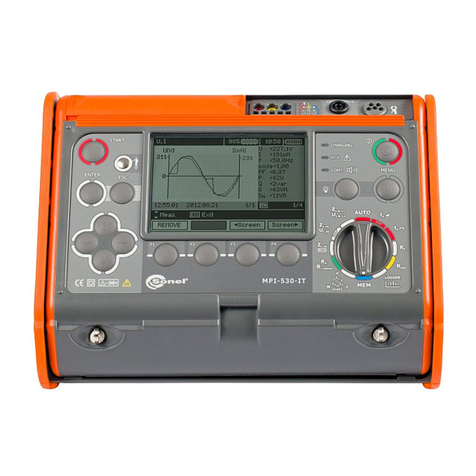Waters ionKey/MS User manual

ionKey/MS
System Guide
715004028/Revision B
Copyright © Waters Corporation 2014
All rights reserved

ii December 8, 2014, 715004028 Rev. B

December 8, 2014, 715004028 Rev. B iii
General Inform ation
Copyright notice
© 2014 WATERS CORPORATION. PRINTED IN THE UNITED STATES OF
AMERICA AND IN IRELAND. ALL RIGHTS RESERVED. THIS
DOCUMENT OR PARTS THEREOF MAY NOT BE REPRODUCED IN ANY
FORM WITHOUT THE WRITTEN PERMISSION OF THE PUBLISHER.
The information in this document is subject to change without notice and
should not be construed as a commitment by Waters Corporation. Waters
Corporation assumes no responsibility for any errors that may appear in this
document. This document is believed to be complete and accurate at the time
of publication. In no event shall Waters Corporation be liable for incidental or
consequential damages in connection with, or arising from, its use. For the
most recent revision of this document, consult the Waters Web site
(waters.com).
Trademarks
Waters, ACQUITY, ACQUITY UPLC, MassLynx, nanoACQUITY, “THE
SCIENCE OF WHAT’S POSSIBLE.”, UPLC, Waters Quality Parts, and Xevo
are registered trademarks of Waters Corporation, and CSH, iKey, IntelliStart,
ionKey, ionKey/MS, and LockSpray are trademarks of Waters Corporation.
PEEK is a trademark of Victrex Corporation.
TaperTip is a trademark of New Objective, Inc.
Other registered trademarks or trademarks are the sole property of their
owners.

iv December 8, 2014, 715004028 Rev. B
Customer comments
Waters’ Technical Communications organization invites you to report any
errors that you encounter in this document or to suggest ideas for otherwise
improving it. Help us better understand what you expect from our
documentation so that we can continuously improve its accuracy and
usability.
We seriously consider every customer comment we receive. You can reach us
Contacting Waters
Contact Waters with enhancement requests or technical questions regarding
the use, transportation, removal, or disposal of any Waters product. You can
reach us via the Internet, telephone, or conventional mail.
Waters contact information:
Contacting medium Information
Internet The Waters Web site includes contact
information for Waters locations worldwide.
Visit www.waters.com.
Telephone and fax From the USA or Canada, phone
800 252-4752, or fax 508 872 1990.
For other locations worldwide, phone and fax
numbers appear in the Waters Web site.
Conventional mail Waters Corporation
34 Maple Street
Milford, MA 01757
USA

December 8, 2014, 715004028 Rev. B v
Safety considerations
Some reagents and samples used with Waters instruments and devices can
pose chemical, biological, or radiological hazards (or any combination thereof).
You must know the potentially hazardous effects of all substances you work
with. Always follow Good Laboratory Practice, and consult your organization’s
standard operating procedures.
Safety hazard symbol notice
Documentation needs to be consulted in all cases where the symbol is
used to find out the nature of the potential hazard and any actions which have
to be taken.
Considerations specific to the system
See also: For safety considerations regarding specific system modules,
consult the appropriate information on the user documentation CD.
Power cord replacement hazard
Warning: To avoid electric shock, use the SVT-type power cord in the
United States and HAR-type (or better) in Europe. The main power cord
must only be replaced with one of adequate rating. For information
regarding what cord to use in other countries, contact your local Waters
distributor.

vi December 8, 2014, 715004028 Rev. B
Solvent leakage hazard
The source exhaust system is designed to be robust and leak-tight. Waters
recommends you perform a hazard analysis, assuming a maximum leak into
the laboratory atmosphere of 10% LC eluate.
Spilled solvents hazard
Flammable solvents hazard
When using flammable solvents, ensure that a stream of nitrogen
continuously flushes the instrument’s source, and the nitrogen supply
pressure remains above the minimum specified in the mass spectrometer
operator’s guide. You must also install a gas-fail device that interrupts the
solvent flowing from the LC system in the event the supply of nitrogen fails.
Warning:
• To confirm the integrity of the source exhaust system, renew
the source O-rings at intervals not exceeding one year.
• To avoid chemical degradation of the source O-rings and
elastomer seals, which can withstand exposure only to certain
solvents (see “Solvents used to prepare mobile phases”on
page 99) determine whether any solvents you use that are not
listed are chemically compatible with the composition of the
O-rings and elastomer seals.
Warning: To avoid injury or equipment damage caused by spilled
solvent, do not place reservoir bottles on top of the instrument or on its
front ledge, unless in the bottle tray provided.
Warning: To prevent ignition of flammable solvent vapors in the
enclosed space of a mass spectrometer’s ion source, ensure that nitrogen
flows continuously through the source. During an analysis requiring the
use of flammable solvents, the nitrogen supply pressure must not fall
below the minimum specified in the mass spectrometer operator’s guide.
Also a gas-fail device must be installed, to interrupt the flow of LC
solvent should the nitrogen supply fail.

December 8, 2014, 715004028 Rev. B vii
High temperature hazard
Refer to your mass spectrometer’s documentation for an illustration of the ion
source’s location on the instrument.
Hazards associated with removing an instrument from service
When you remove the instrument from use to repair or dispose of it, you must
decontaminate all of its vacuum areas. These are the areas in which you can
expect to encounter the highest levels of contamination:
• Source interior
• Waste tubing
• Exhaust system
• Rotary pump oil (where applicable)
The need to decontaminate other vacuum areas of the instrument depends on
the kinds of samples the instrument analyzed and their levels of
concentration. Do not dispose of the instrument or return it to Waters for
repair until the authority responsible for approving its removal from the
premises specifies the extent of decontamination required and the level of
residual contamination permissible. That authority must also prescribe the
method of decontamination to be used and the appropriate protection for
personnel undertaking the decontamination process.
You must handle items such as syringes, fused silica lines, and borosilicate
tips used to carry sample into the source area in accordance with laboratory
procedures for contaminated vessels and sharps. To avoid contamination by
carcinogens, toxic substances, or biohazards, you must wear
chemical-resistant gloves when handling or disposing of used oil.
Warning: To avoid burn injuries, before performing maintenance
operations that involve handling components inside the mass
spectrometer's ion source, allow the source interior to cool.
Warning: To avoid personal contamination with biohazards,
toxic materials, and corrosive materials, wear
chemical-resistant gloves during all phases of instrument
decontamination.
Warning: To avoid puncture injuries, handle syringes, fused silica lines,
and borosilicate tips with extreme care.

viii December 8, 2014, 715004028 Rev. B
Bottle placement prohibition
FCC radiation emissions notice
Changes or modifications not expressly approved by the party responsible for
compliance, could void the users authority to operate the equipment. This
device complies with Part 15 of the FCC Rules. Operation is subject to the
following two conditions: (1) this device may not cause harmful interference,
and (2) this device must accept any interference received, including
interference that may cause undesired operation.
Electrical power safety notice
Do not position the instrument so that it is difficult to operate the
disconnecting device.
Equipment misuse notice
If the equipment is used in a manner not specified by the manufacturer, the
protection provided by the equipment may be impaired.
Safety advisories
Consult Appendix A for a comprehensive list of warning advisories and
notices.
Prohibited: To avoid injury from electric shock or fire, and to prevent
damaging the workstation and ancillary equipment, do not place objects
filled with liquid—such as solvent bottles—on these items, or expose
them to dripping or splashing liquids.

December 8, 2014, 715004028 Rev. B ix
Operating the ionKey/MS system
When operating the ionKey/MS™system, follow standard quality-control (QC)
procedures and the guidelines presented in this section.
Applicable symbols
Symbol Definition
Manufacturer
Date of manufacture
Authorized representative of the European
Community
Confirms that a manufactured product complies
with all applicable European Community
directives
or
Australia EMC compliant
Confirms that a manufactured product complies
with all applicable United States and Canadian
safety requirements
Consult instructions for use
Alternating current

x December 8, 2014, 715004028 Rev. B
Electrical and electronic equipment with this
symbol may contain hazardous substances and
should not be disposed of as general waste.
For compliance with the Waste Electrical and
Electronic Equipment Directive (WEEE)
2012/19/EU, contact Waters Corporation for the
correct disposal and recycling instructions.
Serial number
Part number catalog number
Symbol Definition
5()

December 8, 2014, 715004028 Rev. B xi
Audience and purpose
This guide is intended for personnel who install, operate, and maintain the
ionKey/MS system source module. It presents an overview of the source’s
technology and operation.
Intended use of the ionKey/MS system
Waters designed the ionKey/MS system to perform chromatographic
separations and mass spectrometry analysis. The system is for research use
only and is not intended for use in diagnostic applications.
Calibrating
To calibrate LC systems, follow acceptable calibration methods using at least
five standards to generate a standard curve. The concentration range for
standards must include the entire range of QC samples, typical specimens,
and atypical specimens.
When calibrating mass spectrometers, consult the calibration section of the
operator’s guide for the instrument you are calibrating. In cases where an
overview and maintenance guide, not operator’s guide, accompanies the
instrument, consult the Console online Help system for calibration
instructions.
Quality control
Routinely run three QC samples that represent subnormal, normal, and
above-normal levels of a compound. If sample trays are the same or very
similar, vary the location of the QC samples in the trays. Ensure that QC
sample results fall within an acceptable range, and evaluate precision from
day to day and run to run. Data collected when QC samples are out of range
might not be valid. Do not report these data until you are certain that the
instrument performs satisfactorily.

xii December 8, 2014, 715004028 Rev. B
EMC considerations
Canada spectrum management emissions notice
This class A digital product apparatus complies with Canadian ICES-001.
Cet appareil numérique de la classe A est conforme à la norme NMB-001.
ISM classification
ISM Classification: ISM Group 1 Class B
This classification has been assigned in accordance with IEC CISPR 11
Industrial Scientific and Medical (ISM) instruments requirements. Group 1
products apply to intentionally generated and/or used conductively coupled
radio-frequency energy that is necessary for the internal functioning of the
equipment. Class B products are suitable for use in both commercial and
residential locations and can be directly connected to a low voltage,
power-supply network.

December 8, 2014, 715004028 Rev. B xiii
EC authorized representative
Waters Corporation
Stamford Avenue
Altrincham Road
Wilmslow SK9 4AX
United Kingdom
Telephone: +44-161-946-2400
Fax: +44-161-946-2480
Contact: Quality manager

xiv December 8, 2014, 715004028 Rev. B

December 8, 2014, 715004028 Rev. B xv
General Information .................................................................................... iii
Copyright notice .................................................................................................. iii
Trademarks ........................................................................................................... iii
Customer comments ............................................................................................ iv
Contacting Waters ............................................................................................... iv
Safety considerations ........................................................................................... v
Safety hazard symbol notice................................................................................ v
Considerations specific to the system................................................................. v
FCC radiation emissions notice ...................................................................... viii
Electrical power safety notice ......................................................................... viii
Equipment misuse notice ................................................................................ viii
Safety advisories.............................................................................................. viii
Operating the ionKey/MS system ..................................................................... ix
Applicable symbols ............................................................................................. ix
Audience and purpose......................................................................................... xi
Intended use of the ionKey/MS system ............................................................. xi
Calibrating .......................................................................................................... xi
Quality control .................................................................................................... xi
EMC considerations ........................................................................................... xii
Canada spectrum management emissions notice ........................................... xii
ISM classification ................................................................................................ xii
ISM Classification: ISM Group 1 Class B ....................................................... xii
EC authorized representative ........................................................................ xiii
1 The ionKey/MS System .......................................................................... 19
System components ........................................................................................... 20
For additional information ................................................................................ 22
Table of Contents

xvi December 8, 2014, 715004028 Rev. B
ionKey source ..................................................................................................... 23
iKey separation device ..................................................................................... 24
iKey separation device types............................................................................. 25
2 Optimizing Performance ....................................................................... 29
General guidelines for a microscale system ................................................ 30
Solvent recommendations ................................................................................. 31
Sample volume................................................................................................... 32
Spray optimization............................................................................................. 32
Plumbing connections and retention-time delay ....................................... 33
Carryover ............................................................................................................. 34
Contamination .................................................................................................... 35
Reproducibility .................................................................................................. 35
Preventing leaks ................................................................................................ 37
Sample preparation ........................................................................................... 37
3 Preparing the System ............................................................................ 39
Priming the system ............................................................................................ 40
Preparing the ionKey source .......................................................................... 41
General workflow and precautions ................................................................... 41
Inserting the iKey separation device................................................................ 43
Removing the iKey separation device............................................................... 47
Specifying temperatures.................................................................................... 48
Optimizing the source ....................................................................................... 49
Setting up the camera ....................................................................................... 49
Adjusting the position of the sprayer tip.......................................................... 51
Analyzing samples ............................................................................................. 57
Loading samples in the µSample manager ...................................................... 57
Inserting an analytical iKey separation device................................................ 57
Preparing for sample analysis .......................................................................... 58
Typical settings for analysis.............................................................................. 59

December 8, 2014, 715004028 Rev. B xvii
4 Maintenance Procedures ...................................................................... 61
Spare parts .......................................................................................................... 62
Safety and handling .......................................................................................... 62
Testing the integrity of the solvent flow path ............................................ 64
Mass spectrometer maintenance procedures ............................................. 65
A Safety Advisories .................................................................................... 67
Warning symbols ................................................................................................ 68
Specific warnings ............................................................................................... 69
Notices .................................................................................................................. 72
Warnings that apply to all Waters instruments and devices ................... 73
Warnings that address the replacing of fuses ............................................. 78
Electrical and handling symbols .................................................................... 80
Electrical symbols .............................................................................................. 80
Handling symbols .............................................................................................. 81
B External Connections ............................................................................ 83
System tubing connections .............................................................................. 84
External wiring connections ........................................................................... 86
ionKey/MS system external wiring connections .............................................. 86
Ethernet connections ......................................................................................... 87
Signal connections ............................................................................................. 88
Making signal connections ................................................................................ 88
Connecting to the electricity source ............................................................. 94
C Materials of Construction and Compatible Solvents ..................... 97
Preventing contamination ............................................................................... 98
Items exposed to solvent ................................................................................. 99
Solvents used to prepare mobile phases ...................................................... 99

xviii December 8, 2014, 715004028 Rev. B

December 8, 2014, 715004028 Rev. B 19
1The ionKey/MS System
The ionKey/MS™system performs the UPLC®separation inside the
source of the mass spectrometer. In this integrated system, the product
of a chromatographic separation is introduced directly into the mass
spectrometer's ionization source.
Contents:
Topic Page
System components.......................................................................... 20
ionKey source ................................................................................... 23
iKey separation device..................................................................... 24

1 The ionKey/MS System
20 December 8, 2014, 715004028 Rev. B
System components
The ionKey/MS system includes these components:
• ACQUITY UPLC®M-Class
Note: Certain ionKey/MS configurations can use a nanoACQUITY®
UPLC.
•ionKey
™source
•iKey
™separation device
• Mass spectrometer
• MassLynx®mass spectrometry software
The ionKey/MS system configurations can include these modules:
• Binary solvent manager
• Auxiliary solvent manager
• Fixed-loop Sample manager
• Trap-valve manager
• Sample organizer
• Mass spectrometer fitted with an ionKey source.
The ionKey source accepts an iKey separation device.
Table of contents
Other Waters Measuring Instrument manuals
Popular Measuring Instrument manuals by other brands
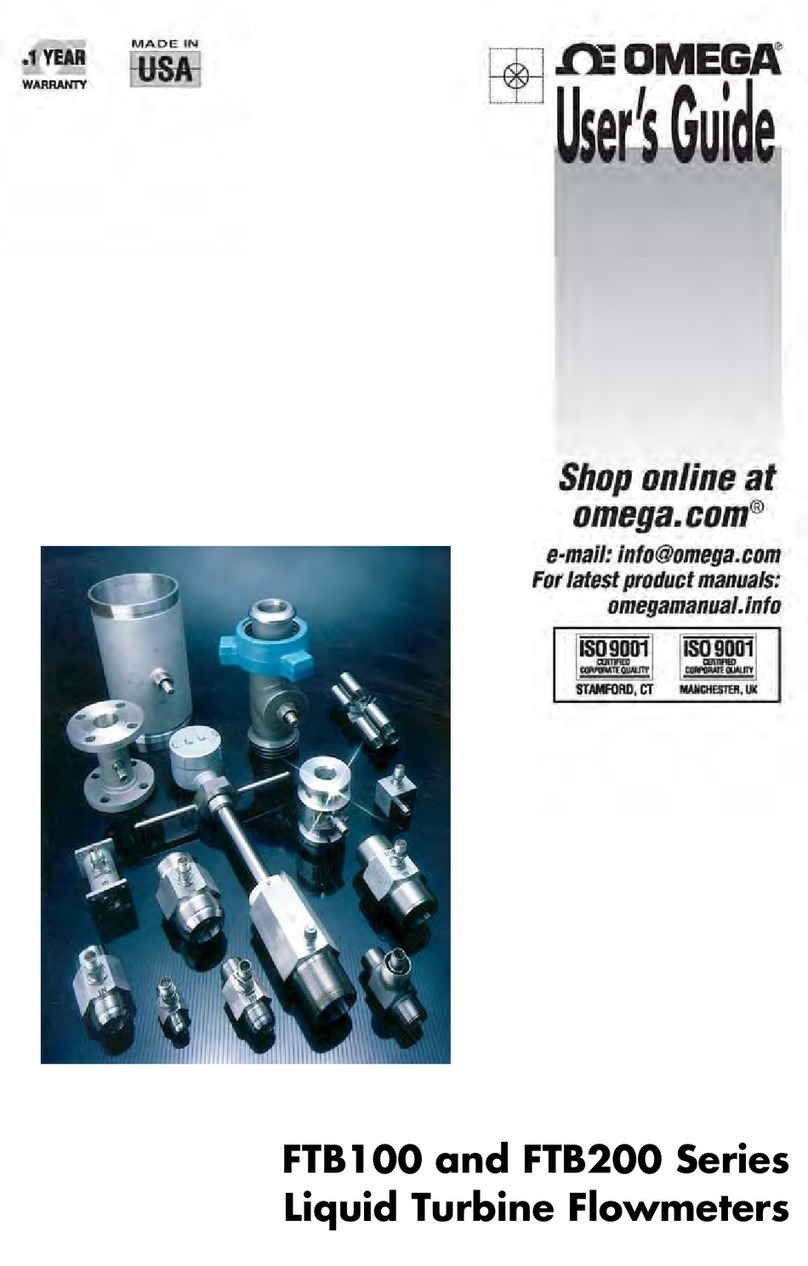
Omega Engineering
Omega Engineering FTB100 Series user guide
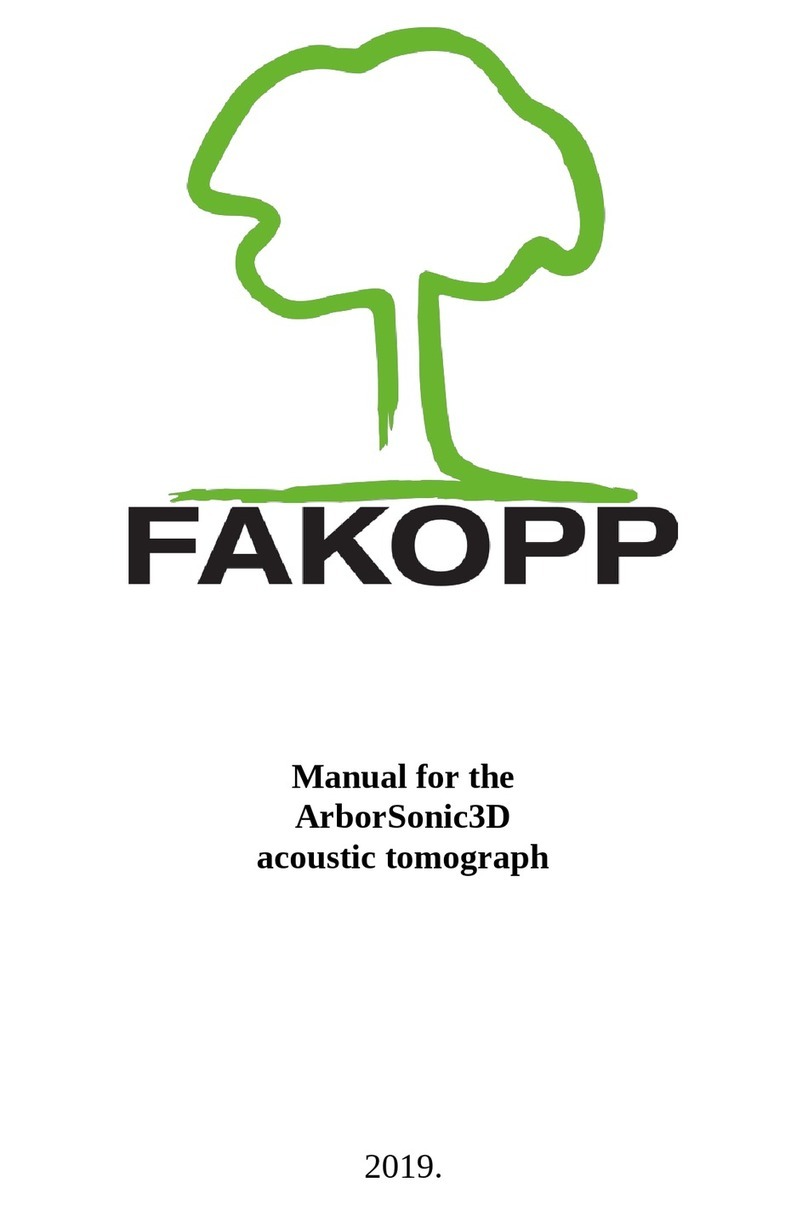
Fakopp
Fakopp ArborSonic3D manual

FineTek
FineTek EDX2 Operation manual

S+S Regeltechnik
S+S Regeltechnik HYGRASREG KH-30 operating instructions
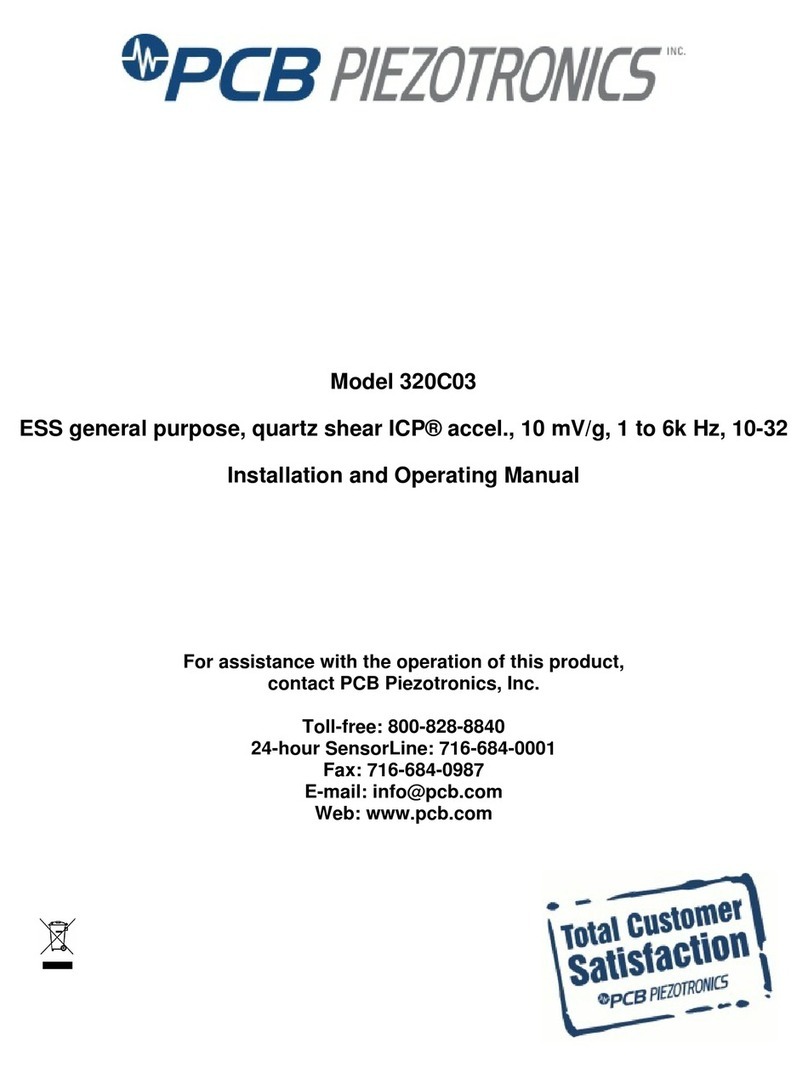
PCB Piezotronics
PCB Piezotronics 320C03 Installation and operating manual
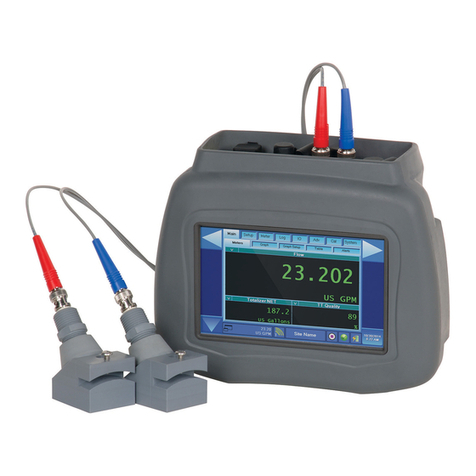
Badger Meter
Badger Meter Dynasonics DXN user manual
